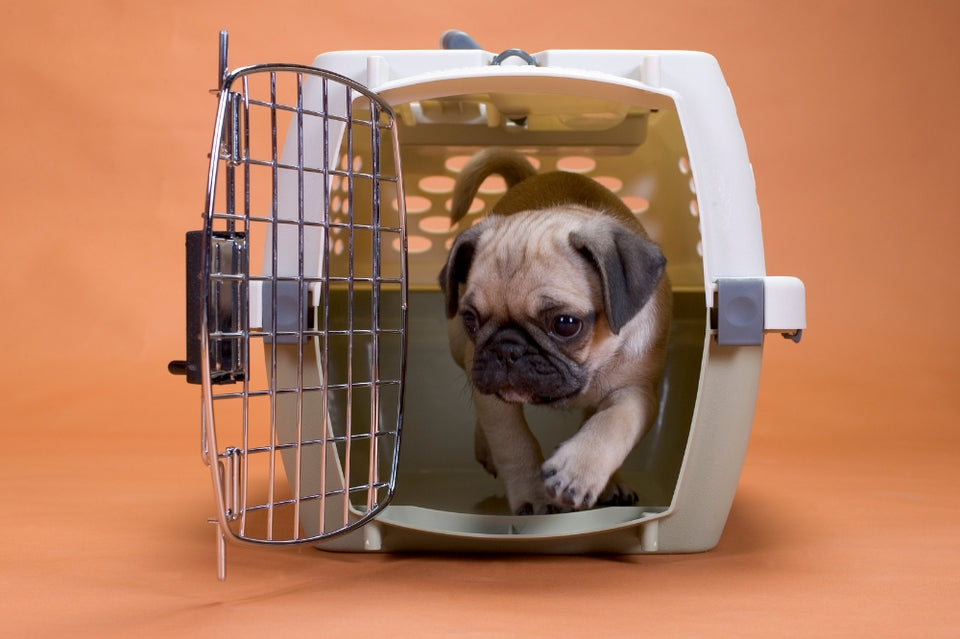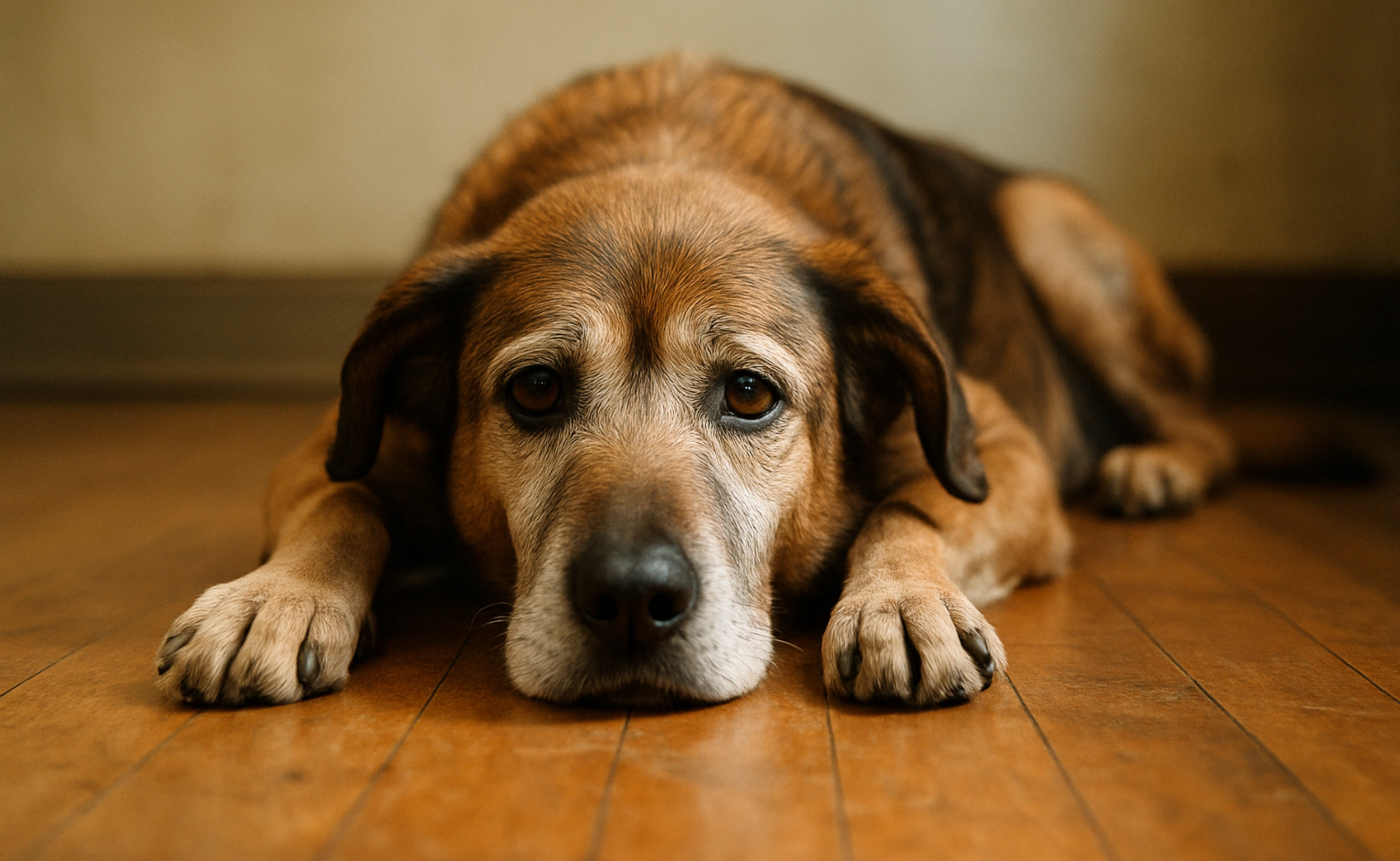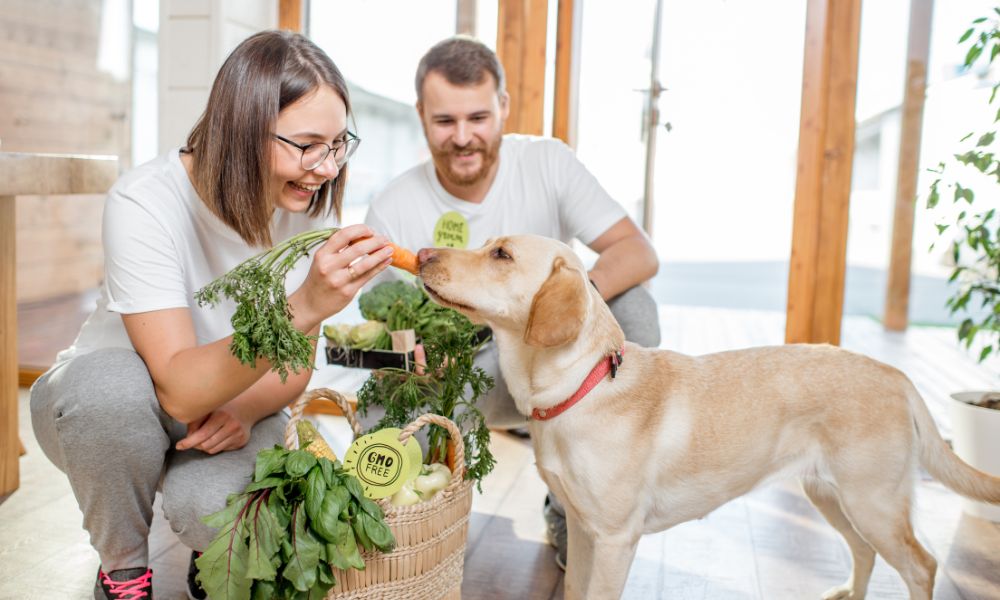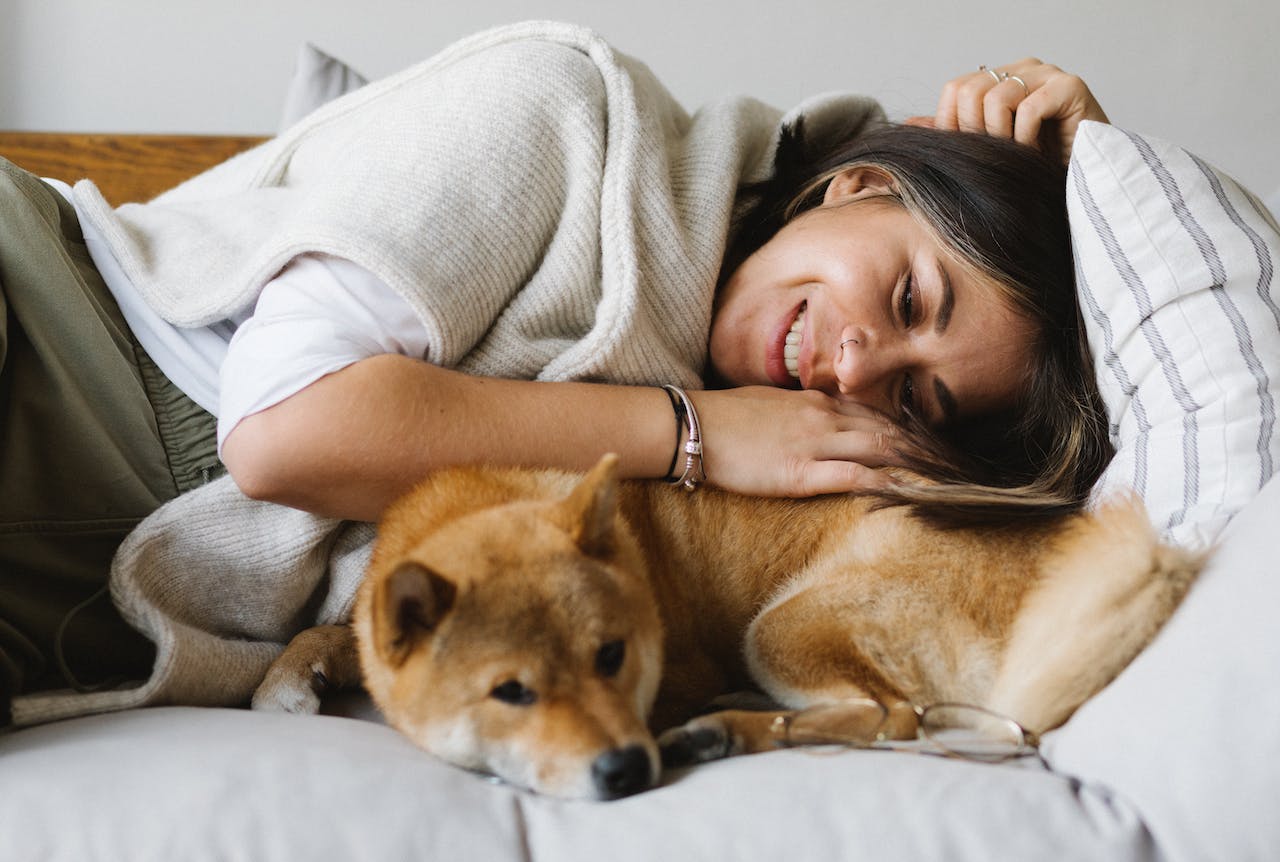
How To Train Your Puppy To Love Their Crate

Congrats on your new puppy! This is a truly special time in your life with your new fur baby. But if you haven’t already, you’ll soon discover that puppies are a double-edged sword. They bring so many moments of pure joy, but they can also be exasperating and completely exhausting.
Fortunately, puppy crate training can help make those exasperating aspects of raising a puppy easier, helping you keep your sanity so you can enjoy the puppy stage and forge a tighter bond with your new best buddy. And crate training your puppy now will carry lasting benefits for your pup throughout their entire life.
Crate training a puppy the right way takes time and patience. While the steps to crate train a dog or puppy are pretty basic, puppies come with a unique set of needs and challenges that you don’t face with adult dogs. That’s why we’ve put together a list of puppy crate training hacks and best practices to help you teach your puppy to love hanging out in their crate.
Why Should You Crate Train Your Puppy?
There are five universal truths about puppies, regardless of their breed:
- Puppies need a lot of sleep – up to 20 hours a day!
- Puppies are constantly learning and taking in new things. They become easily overwhelmed and overstimulated.
- Puppies need structure, consistent routines and enforced boundaries.
- Puppies are extremely curious. They chew first and ask questions later.
- Puppies pee a lot, and they’re not particular about where they do it.
With that in mind, here are just a few of the benefits of using a crate as part of your puppy’s overall training regimen:
- A crate can help you get your puppy on a sleep schedule.
- A crate can provide your puppy with a calm, quiet, safe space to chill out and process everything they’re learning.
- A crate can help you establish a structured schedule for your puppy so they know what to expect and when to expect it.
- A crate can keep your puppy safe and out of trouble when you can’t be there to supervise them.
- A crate makes potty training your puppy relatively easy and helps prevent accidents.
Start off on the Right Paw: Get the Right Equipment
Choosing the right crate for your puppy will go a long way toward a smooth transition. You have two basic options for the type of crate you use. The first is a pet carrier or carrier-style crate. Designed primarily for travel, these are made of hard molded plastic and are more enclosed and den-like. They don’t have openings around the bottom half, which makes them a good choice if your puppy tends to get agitated when they can easily see everything going on around them.
For puppies who get more upset when they can’t see you, a wire kennel might be a better choice. These are free-standing crates made of metal wire, and although they look more like cages, which some people find off-putting, they make your puppy feel more like part of the action. They can easily be made to feel more den-like by simply covering them with a blanket when it’s time for your pup to settle down and sleep.
Which style of crate you choose isn’t as important as selecting the right size. Your pup should have enough room to stand up, turn around and stretch out, but not enough room to roam around, which is an open invitation to potty inside the crate. Dogs and puppies typically have an instinctive aversion to soiling their bedding, so limiting the amount of space they have will make them more likely to wait until you take them out for a potty break.
Of course, if you have a large breed puppy, you might balk at the idea of buying a new crate every time they outgrow the old one. But you can get crate dividers that will work in most wire crates. This will let you get the crate your pup will grow into. Use the dividers to create a puppy-sized space that you can adjust as your puppy grows.
It’s also important to make sure your baby dog has access to fresh water throughout the day. For this, a dish that clips onto the side or door of the crate is ideal for letting your pup get a drink when they’re thirsty while preventing spills.
Crates aren’t exactly designed for comfort. A blanket or soft padding in the bottom of the crate will make it a lot more comfortable and inviting for your pup, and draping a blanket over the top and sides will block out light and noise when it’s time to sleep and make the crate feel more like a den. Our Upgrade Your Crate Kit comes with everything you need to make a crate cozy and comfy for your puppy, including a waterproof crate pad liner in case they just can’t wait for their next potty break. Of course, if your puppy chews everything they can get their teething gums on, you might stick to lining their crate with a towel until they outgrow the chewing stage, and save the luxury crate pad for a reward once they’re older.
Finally, keep in mind that puppies under four months old typically need to potty as often as every one to two hours. Older pups shouldn’t be kept in their crate more than four hours at a time without a break to potty and exercise. If someone can’t be there to let them out frequently throughout the day, you can enclose the crate inside an exercise pen, or x-pen, lined with puppy training pads, and simply leave the crate door open. While this isn’t ideal for expediting potty training, it can be a good solution for new puppy parents who work full time away from home.
Tips, Tricks & Best Practices for Crate Training Your Puppy
The key to getting your puppy to love their crate is to build lots of positive associations and avoid negative ones. Follow these tips to help convince your little pup that their crate is an awesome place to hang out:
Make the crate part of the scenery.
Ideally, you should set the crate up before bringing your puppy home so it will just be one more thing for them to explore. But if you got the puppy before the crate, just set it up and let your pup sniff and explore it at will. Either way, leave the door open so they can check out the inside. Don’t try to force anything. Simply let your pup get used to the presence of the crate to remove any sense of fear that comes from unfamiliarity.
Don’t force it.
Keeping your puppy in their crate too long or shutting them inside before they're ready can induce fear, hinder their ability to trust you, and create negative associations with the crate. In these beginning stages, as you build up to getting them comfortable with the crate, open the door and let them out quickly if they whimper at being shut in. This just means they need more time to get comfortable with the crate and to build confidence in you.
Serve meals inside the crate.
One of the quickest and easiest ways to instill positive feelings in your puppy toward their new crate is to associate it with food and meal times. Begin by placing your pup’s food dish outside the crate, next to the door with the door open. Once they begin approaching the bowl and eating without any hesitancy, move the bowl inside the crate. Repeat this process, moving the dish gradually toward the back of the crate. When they’re comfortable with entering the crate completely, try shutting the door while they eat.
Move a sleeping pup into the crate.
Whenever your puppy falls asleep, gently pick them up and place them inside the crate without shutting the door. If they wake up right away and climb out, that’s okay. Just try again when they fall back to sleep. This will get your pup to associate the crate with sleeping and resting, and teach them that their crate is a safe place for these activities.
Play crate games.
You’ve already associated the crate with two of your pup’s favorite things -- food and sleep. Build an association with their other favorite thing -- fun! -- by turning crate training into a game. Toss treats or a favorite toy into the crate and send your fur baby in to get them, praising them and engaging them in play when they come out again. This is a good time to introduce a command like “Crate,” “Go in!” or “Go to your room” each time you toss their treat inside.
Provide a special crate-only toy.
Giving your puppy a special toy that they absolutely love, but can only have inside their crate, is a power move that will help make your puppy eager to spend time alone in their crate. A Kong stuffed with treats is ideal for this. As your pup settles down to enjoy their toy, try shutting the door, working up gradually to longer periods with the door closed, until they’re content to stay in until you let them out.
Establish a schedule – and stick to it.
Once your baby pup is comfortable with being shut in their crate for extended periods, it’s time to establish a crate time routine. A scheduled routine will provide both you and your little bud with consistency that will keep your day from feeling so chaotic and allow you to run errands and get things done without constantly being on puppy watch.
Generally, after a meal, a potty break, and about half an hour for playtime, engagement and obedience training, your puppy should return to the crate for quiet time to decompress and sleep. Crate time should last one to two hours for a puppy under four months old. A four or five month old puppy crate training schedule should involve taking them out to potty, play and train at least every two hours, gradually increasing their crate time as needed as they get older. But dogs of any age shouldn’t be left in a crate for more than four hours at a time.
Know when to ignore whining.
Just because your puppy’s a pro at being in their crate doesn’t mean they won’t whine or bark to be let out or to get attention when they’re bored. As long as all of their needs have been met – they’ve been fed, they’ve pottied, they’ve had engagement and exercise, etc. – and it’s nowhere near time for a break, it’s best to ignore their attempts to get attention. Even acknowledging their whining to tell them to stop will only reinforce their behavior by giving them the attention they’re seeking.
That said, it’s best to follow your gut. If your pup’s whining seems abnormal or urgent, let them out to make sure there’s nothing wrong with them and see if they need to potty. If not, just return them to the crate for the remainder of their crate time and feel free to ignore any further puppy barking or whining.

Do you Have to Crate Train a Puppy at Night?
Many puppy crate training experts say that nighttime crate training should begin their very first night with you, but the wisdom of this is debatable. Your puppy’s first few days with you are rather traumatic – they’ve been taken from their mother and siblings and thrust into a completely strange situation. Up until now, your pup has spent every night since birth sleeping in a warm pile of other puppies. It’s no wonder that puppies who are expected to sleep alone in a crate their first night at their new home spend the entire night crying and whining.
There are a lot of good reasons to eventually transition your pup to sleeping overnight in their crate. Among them are potty training and getting them on a consistent sleep schedule. Another good reason is that some dogs, especially highly driven breeds like herding dogs, will run all over you if you don’t establish and enforce firm boundaries from a young age.
But it’s fine to take your puppy to bed with you until they feel at home and they’ve gotten accustomed to being in their crate. Sleeping with your pup will build a tighter bond with them and cut down on night time puppy crying, making it easier for you to get a good night’s sleep. If you’re worried about night time accidents, a waterproof dog blanket will protect your bedding while providing your pup with a comfy spot to snuggle beside you.
Once it’s time to transition your pup to sleeping in their crate, here are a few things you can do to sooth your puppy and help crate training at night go smoothly:
- Move the crate into your room, next to your bed, or introduce a second crate that stays in your room so they can stay close to you at night.
- Provide an old t-shirt or sweatshirt to sleep with that has your scent on it.
- Try a puppy soothing toy that has a warm insert to mimic body heat or that mimics the sound of a mother dog’s heartbeat.
- Use a calming synthetic pheromone diffuser or spray that mimics pheromones produced by mother dogs.
Be Patient, Take Your Time, and Don’t Give Up
Some puppies take to crate training very quickly, but others may need weeks or even months to get the hang of it. It’s important not to rush them and to let them go at their own pace. Patience and consistency are the key to success. And remember, progress isn’t always linear. When it comes to puppy crate training, regression can also be a factor. If your puppy regresses, just go back to basics and focus on reinforcing those positive associations.
You’ve got your work cut out for you, but you’ve got this. And the lifetime benefits of proper crate training for puppies is well worth the effort you’ll put into these first few months.
Share this article
written by


